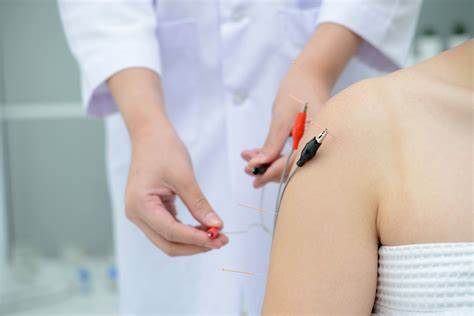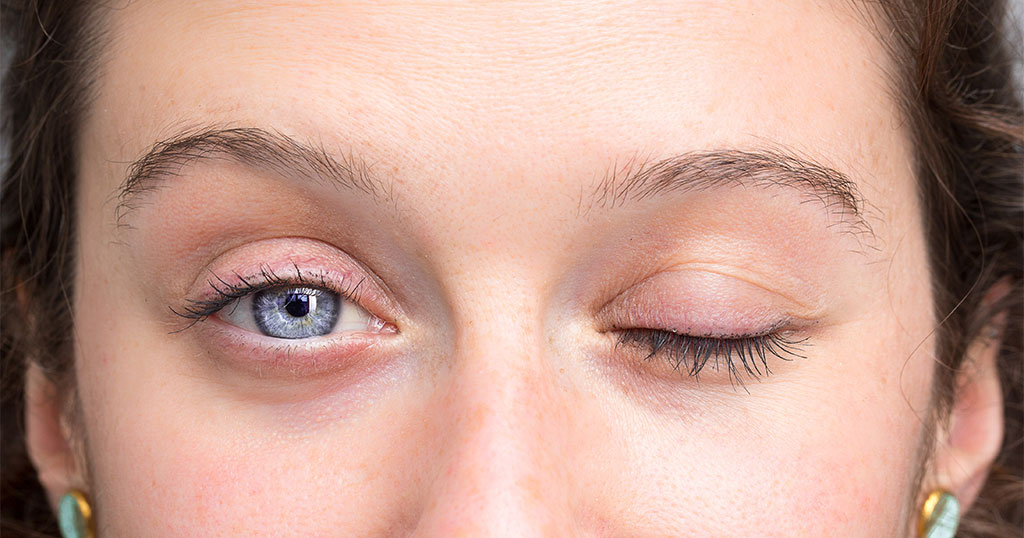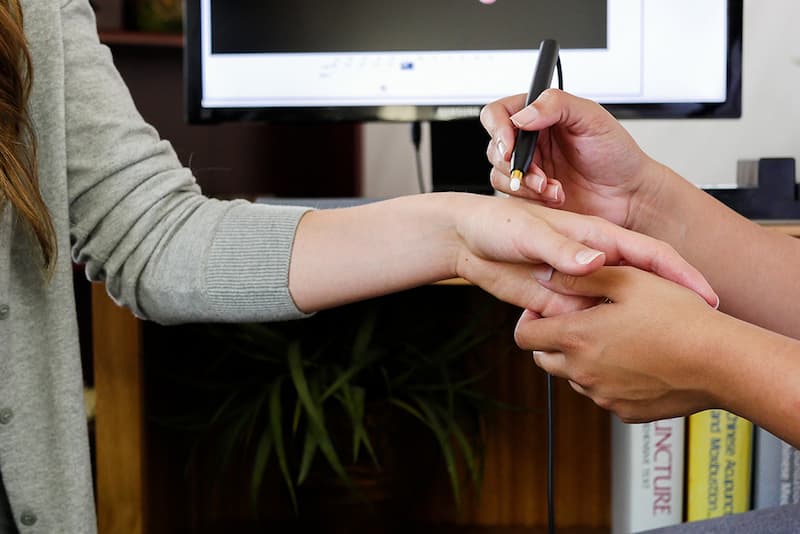Electroacupuncture, A Modern Twist on Ancient Healing

In the world of holistic medicine, acupuncture has long been revered as a time-tested method for restoring balance, relieving pain, and supporting natural healing. As modern science and technology evolve, traditional therapies like acupuncture have undergone innovations to enhance their effectiveness. One such evolution is electroacupuncture a powerful technique that adds electrical stimulation to traditional needling practices. By combining ancient principles with modern technology, electroacupuncture offers a cutting-edge solution to a wide range of health conditions.
This article explores the origins, mechanisms, benefits, and applications of electroacupuncture, showcasing how this modern adaptation is revolutionizing acupuncture treatment and improving patient outcomes.
What is Electroacupuncture?
Electroacupuncture is an advanced form of acupuncture in which small electrical currents are passed between pairs of acupuncture needles. While traditional acupuncture relies solely on manual stimulation, electroacupuncture introduces a mild, controlled electrical pulse to the acupoints, enhancing the physiological response.
This method amplifies the traditional effects of acupuncture, making it particularly effective for conditions involving chronic pain, muscle tension, neurological disorders, and inflammation. The technique involves attaching electrodes to needles after insertion, with the electrical impulses being adjusted for frequency and intensity depending on the patient’s needs.
How Electroacupuncture Differs from Traditional Acupuncture
While both methods follow the same foundational principles of traditional Chinese medicine (TCM), there are key differences that make electroacupuncture stand out:
Stronger and more consistent stimulation: The electrical impulses provide a continuous stimulation that can be more effective than manual manipulation.
Customizable treatment parameters: Practitioners can adjust frequency, intensity, and duration to suit specific conditions.
Targeted for deeper imbalances: Electroacupuncture can penetrate deeper muscle layers and activate complex neural pathways that might not respond to manual needling alone.
The Science Behind Electroacupuncture
Understanding how electroacupuncture works involves both Eastern and Western medical perspectives. In TCM, the technique enhances the flow of qi (energy) and blood by stimulating meridians more intensely. From a biomedical viewpoint, electroacupuncture stimulates nerve fibers, releases endorphins, and modulates pain signals in the central nervous system.
Studies have shown that electroacupuncture triggers neurochemical responses, including the release of serotonin, dopamine, and endogenous opioids, which help reduce pain, inflammation, and stress. It also influences the hypothalamic-pituitary-adrenal (HPA) axis and autonomic nervous system, providing systemic effects that go beyond the local site of needle insertion.
Benefits of Electroacupuncture
1. Enhanced Pain Relief
One of the most well-known applications of electroacupuncture is in pain management. It is especially effective for chronic pain conditions such as:
Arthritis
Sciatica
Migraines and headaches
Fibromyalgia
Postoperative pain
Low back pain
The continuous electrical stimulation helps desensitize pain receptors, reduce inflammation, and improve circulation in affected areas. Many patients report longer-lasting pain relief compared to traditional acupuncture alone.
2. Effective Neurological Support
Electroacupuncture for neurological disorders has gained significant attention due to its ability to stimulate nerve regeneration and modulate brain activity. It has shown promising results for:
Stroke recovery
Bell’s palsy
Multiple sclerosis
Peripheral neuropathy
Parkinson’s disease
By activating specific acupuncture points and delivering controlled stimulation, electroacupuncture supports motor function, reduces muscle spasticity, and enhances neuroplasticity—the brain’s ability to form new neural connections.
3. Muscle Recovery and Athletic Performance
Athletes and physical therapists often turn to electroacupuncture for muscle recovery, injury prevention, and enhanced performance. It promotes faster healing of soft tissue injuries, reduces inflammation, and improves flexibility.
This method is often integrated into sports acupuncture protocols, combining traditional meridian theory with modern rehabilitation science. The electrical pulses penetrate deep muscle layers, improving circulation and removing lactic acid buildup, which is essential for post-exercise recovery.
4. Fertility and Reproductive Health
Electroacupuncture for fertility is becoming increasingly popular as an adjunct therapy for women undergoing IVF or struggling with hormone imbalances. Research shows it can:
Improve ovarian function
Regulate menstrual cycles
Enhance uterine blood flow
Support embryo implantation
For men, electroacupuncture may help improve sperm motility and count by reducing stress and enhancing endocrine function. The method’s ability to balance hormones and regulate the nervous system makes it a valuable addition to reproductive medicine.
5. Stress Reduction and Mental Health
In today’s fast-paced world, electroacupuncture for anxiety and depression offers a non-pharmaceutical approach to emotional balance. The technique stimulates endorphin release, regulates cortisol levels, and activates the parasympathetic nervous system—promoting deep relaxation and improved mood.
Clinical studies have demonstrated that electroacupuncture helps alleviate symptoms of depression, PTSD, insomnia, and chronic stress disorders. It provides a holistic method of healing that supports both the mind and body.
How Electroacupuncture is Performed
A typical electroacupuncture treatment begins with a thorough consultation and diagnosis, based on traditional Chinese medicine principles. Once appropriate acupuncture points are selected, the practitioner inserts fine needles as in a standard session. Then, small electrode clips are attached to specific pairs of needles.
The practitioner sets the frequency (Hz) and intensity (mA) of the electrical current, which is usually a mild pulsing or tapping sensation. Patients often describe the feeling as relaxing and rhythmic rather than painful.
Each session lasts around 20–30 minutes, and the number of treatments varies depending on the condition being treated. Electroacupuncture is safe when performed by a trained practitioner and is generally well tolerated.
Safety and Contraindications of Electroacupuncture
While electroacupuncture is a safe and effective therapy, there are a few precautions to be aware of:
Not suitable for patients with pacemakers or electrical implants
Avoided in pregnant women unless under specific protocols
Should not be used near the heart or brain without specialized training
Electrode placement must be done carefully to prevent discomfort or muscle fatigue
Practitioners must be well trained in both acupuncture and electrical stimulation to ensure safety and efficacy. Always consult a licensed acupuncturist who is certified in electroacupuncture therapy.
Electroacupuncture vs. TENS and Dry Needling
It’s important to distinguish electroacupuncture from similar modalities like TENS (Transcutaneous Electrical Nerve Stimulation) and dry needling.
TENS uses external electrodes placed on the skin, while electroacupuncture delivers stimulation directly through inserted needles, allowing deeper and more targeted treatment.
Dry needling, typically performed by physical therapists, lacks the diagnostic framework of Chinese medicine and does not integrate meridian theory. Electroacupuncture, on the other hand, is grounded in TCM principles, making it a more holistic approach.
Modern Applications and Research Support
Growing scientific interest in electroacupuncture research has led to numerous clinical trials. Studies from institutions such as Harvard, Johns Hopkins, and Beijing University of Chinese Medicine have confirmed its effectiveness in areas like:
Chronic pain management
Chemotherapy-induced nausea
Stroke rehabilitation
Pelvic floor dysfunction
Hypertension and cardiovascular health
Modern clinics are also integrating electroacupuncture into integrative health programs, combining it with nutrition, physical therapy, herbal medicine, and psychotherapy to provide comprehensive care.
Technology and Electroacupuncture Devices
Several electroacupuncture devices are now available that allow for advanced treatment protocols. These machines vary in complexity, with options for frequency modulation, waveform customization, and safety settings.
Some of the most commonly used electroacupuncture machines include:
ITO ES-160 and ITO ES-320 (Japan)
Pantheon Research Devices (USA)
Hwato SDZ-II (China)
Professional-grade equipment offers precision and flexibility, allowing practitioners to tailor treatments with high accuracy. These tools have made electroacupuncture therapy more accessible and standardized across different clinical settings.
Integrating Electroacupuncture into Your Practice
If you are a licensed acupuncturist or TCM practitioner, incorporating electroacupuncture into your clinic can significantly expand your treatment options. Here’s how to do it effectively:
Undergo specialized training in electroacupuncture techniques and safety protocols
Invest in high-quality equipment from reputable manufacturers
Educate your patients on the benefits and process of electroacupuncture
Document outcomes and compare progress using tools like AcuGraph
Market your new service through newsletters, social media, and wellness events
Practices that offer modern acupuncture techniques often appeal to a broader demographic, including tech-savvy clients, chronic pain sufferers, and those seeking non-invasive alternatives to medication.
Patient Testimonials and Real-World Impact
Patients who undergo electroacupuncture therapy often report noticeable improvements after just a few sessions. Common feedback includes:
“My back pain disappeared after two electroacupuncture sessions—something I’d struggled with for years.”
“I was skeptical at first, but after using electroacupuncture for anxiety, I finally started sleeping through the night.”
“My physical therapist recommended it for shoulder recovery. It worked faster than I expected and helped me return to sports.”
These experiences reflect the growing trust in electroacupuncture as a modern healing method grounded in both tradition and innovation.
Conclusion: A Powerful Synergy of Old and New
Electroacupuncture represents the perfect fusion of ancient Chinese medicine and modern science. It respects the wisdom of traditional acupuncture while enhancing it with the power of electricity and technology. This synergy allows for more targeted treatments, deeper healing, and faster results.
Whether you are a practitioner looking to expand your clinical offerings or a patient searching for effective solutions, electroacupuncture offers a compelling, evidence-based path to wellness. It embodies the best of both worlds—a modern twist on ancient healing that continues to shape the future of integrative medicine.
Note: IndiBlogHub features both user-submitted and editorial content. We do not verify third-party contributions. Read our Disclaimer and Privacy Policyfor details.







